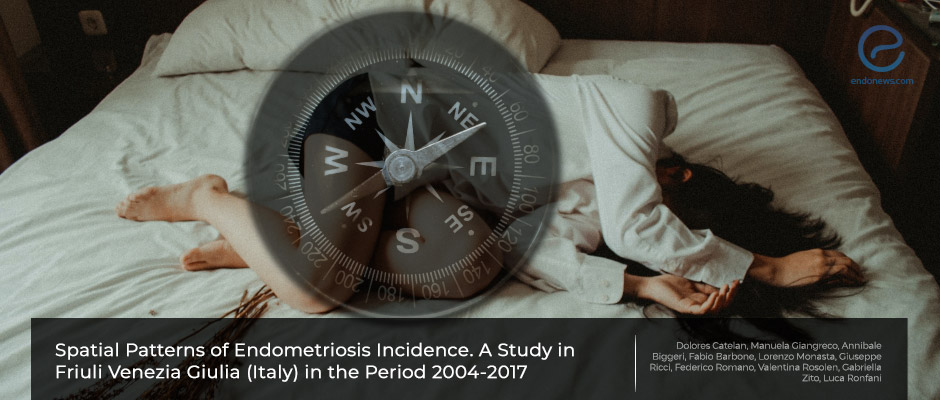Strong Geographical Gradient in Endometriosis Incidence Identified
Aug 27, 2021
Incidence maps could help develop hypotheses about the environmental factors associated with the disease.
Key Points
Highlights:
- There is a very strong north-south spatial gradient in endometriosis cases in the Friuli Venezia Giulia region of Italy.
Importance:
- Incidence maps such as the one generated in this study can help highlight spatial trends in the distribution of relative risk.
- This feature will help to develop hypotheses about the environmental factors leading to the progression of endometriosis.
What's done here:
- Researchers analyzed the incident cases of endometriosis in women aged 15 to 50 from 2004 to 2017 in the Friuli Venezia Giulia region of Italy.
- Hospital discharge records and pathology databases were used for evaluation.
Key results:
- There were 4,125 new cases of endometriosis in this particular region of Italy.
- The incidence rate of endometriosis was 111 in 100,000.
- The highest incidence was among women ages 31 to 35 (incidence of 160 in 100,000).
- There was a very strong north-south spatial gradient in the incidence of endometriosis in the region.
Limitations:
- The operational definition of the incident case could lead to underestimating the number of disease cases.
- A potential ecological bias cannot be excluded.
- There may be residual differential ascertainment bias among geographical units.
Lay Summary
The geographical distribution of new endometriosis cases showed a very strong north-south spatial gradient in the highly industrialized Friuli Venezia Giulia region of Italy, according to a new study published in the International Journal of Environmental Research and Public Health.
“The cluster of 5 municipalities in the industrialized and polluted south-east part of the region is suggestive,” the researchers wrote. But they said information about patients' characteristics and exposure histories are limited due to the ecologic nature of the study.
The incidence estimates of endometriosis vary greatly in the literature. This could be due to the fact that it is difficult to diagnose endometriosis but could also be because there is geographical variability of disease risk.
In order to study the spatial pattern of the incidence of endometriosis, a team of researchers led by Dr. Luca Ronfani, of the Institute for Maternal and Child Health-IRCCS "Burlo Garofolo” in Trieste, Italy used data from hospital discharge records and pathology databases of the Friuli Venezia Giulia region. They collected information about the incident cases of endometriosis in women ages 15 to 50 from 2004 to 2017.
Their results showed that there were 4,125 new cases of endometriosis during this period. The incidence rate of the disease was 111 in 100,000. The highest incidence was seen among women ages, 31 to 35 with an incidence of 160 in 100,000.
The researchers also found that there was a very strong north-south spatial gradient in the incidence of endometriosis. “We consistently identified a group of five neighboring municipalities at higher risk (…), even accounting for ascertainment bias,” they wrote.
According to the authors, further research should include biomonitoring and life-course studies to better evaluate these findings.
Research Source: https://pubmed.ncbi.nlm.nih.gov/34281113/
incidence of endometriosis environment pathology italy industrialized geographical

